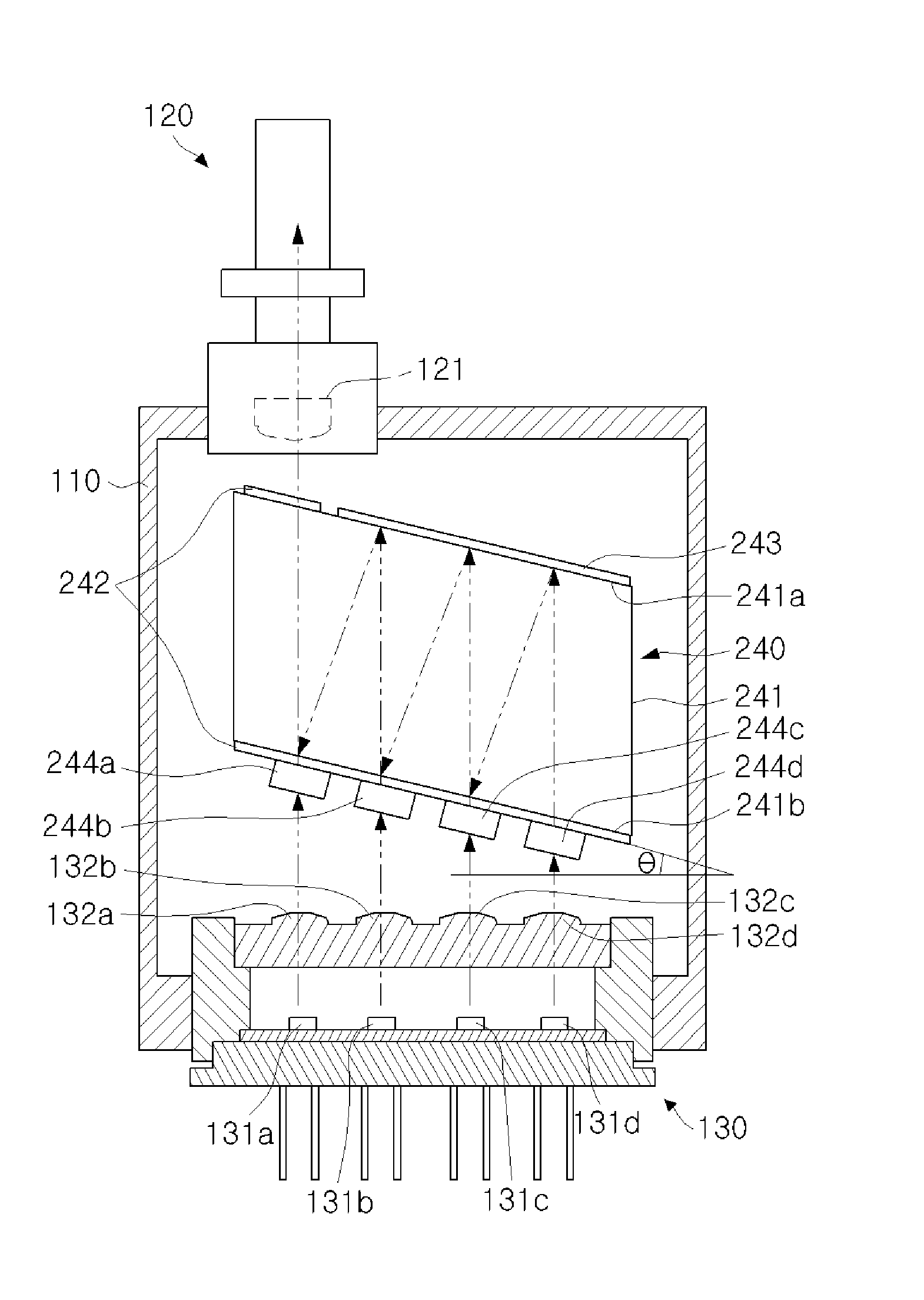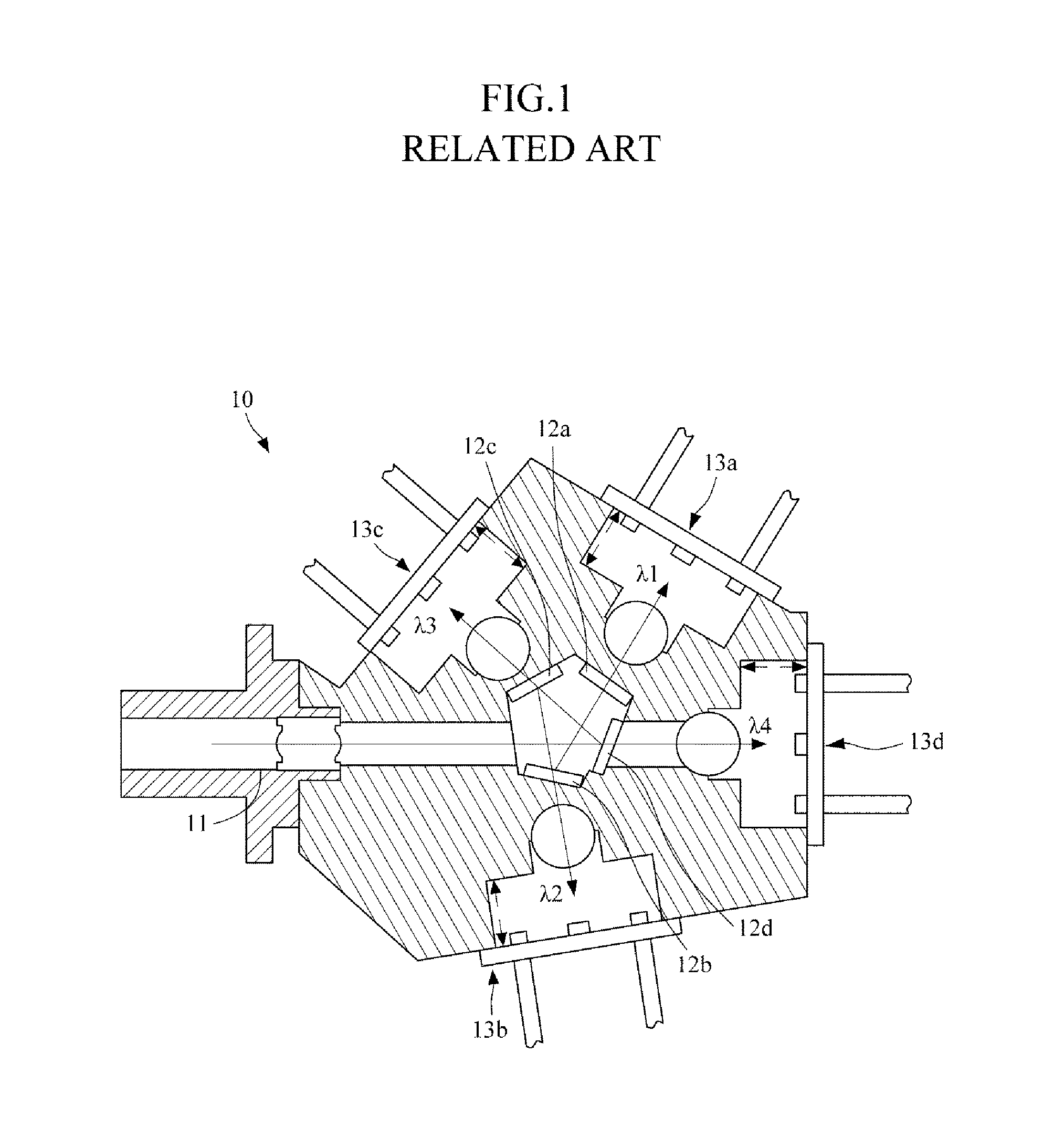Multi-wavelength optical transmitting and receiving modules
a multi-wavelength, receiving module technology, applied in the direction of optics, instruments, optical light guides, etc., can solve the problems of large loss of optical signals, difficult to design electrical signal interfaces and reduce the size of optical transmitting and receiving modules, and related optical loss, so as to achieve easy alignment, high production yield, and high tolerance for alignment
- Summary
- Abstract
- Description
- Claims
- Application Information
AI Technical Summary
Benefits of technology
Problems solved by technology
Method used
Image
Examples
Embodiment Construction
[0031]The above and other features and advantages of the present invention will become more apparent by describing exemplary embodiments thereof with reference to the attached drawings.
[0032]FIG. 3 is a cross-sectional view of an exemplary multi-wavelength optical transmitting module 100. Referring to FIG. 3, the multi-wavelength optical transmitting module 100 includes a housing 110, an optical output block 120, an optical transmitting block 130, and an optical multiplexer (MUX) block 140.
[0033]The housing 110 includes space therein, and a first coupling hole 111 and a second coupling hole 112 are respectively formed in opposite surfaces of the housing 110. The optical output block 120 is coupled to the first coupling hole 111, and the optical transmitting block 130 is coupled to the second coupling hole 112. The first and second coupling holes 111 and 112 may be large enough to respectively allow the optical output block 120 and the optical transmitting block 130 to be partially i...
PUM
 Login to View More
Login to View More Abstract
Description
Claims
Application Information
 Login to View More
Login to View More - R&D
- Intellectual Property
- Life Sciences
- Materials
- Tech Scout
- Unparalleled Data Quality
- Higher Quality Content
- 60% Fewer Hallucinations
Browse by: Latest US Patents, China's latest patents, Technical Efficacy Thesaurus, Application Domain, Technology Topic, Popular Technical Reports.
© 2025 PatSnap. All rights reserved.Legal|Privacy policy|Modern Slavery Act Transparency Statement|Sitemap|About US| Contact US: help@patsnap.com



